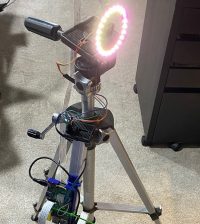- makeITcircular 2024 content launched – Part of Maker Faire Rome 2024Posted 2 weeks ago
- Application For Maker Faire Rome 2024: Deadline June 20thPosted 2 months ago
- Building a 3D Digital Clock with ArduinoPosted 7 months ago
- Creating a controller for Minecraft with realistic body movements using ArduinoPosted 7 months ago
- Snowflake with ArduinoPosted 8 months ago
- Holographic Christmas TreePosted 8 months ago
- Segstick: Build Your Own Self-Balancing Vehicle in Just 2 Days with ArduinoPosted 8 months ago
- ZSWatch: An Open-Source Smartwatch Project Based on the Zephyr Operating SystemPosted 9 months ago
- What is IoT and which devices to usePosted 9 months ago
- Maker Faire Rome Unveils Thrilling “Padel Smash Future” Pavilion for Sports EnthusiastsPosted 10 months ago
NSynth Super Plays a Completely Different Music

The NSynth Super is an open-source, experimental project which comes from Google’s research project, Magenta. Using NSynth, a neural network that generates sounds, the synthesizer can actually generate the sounds that come from an instrument. The algorithm uses the core qualities of an instrument to create sounds instead of just generating notes. Google’s neural synthesiser enables musicians to use machine learning to produce never-before-heard sounds and paw at the limits of computer-enhanced creativity.
NSynth Super provides several physical knobs to turn and a slick display to drag your finger on, making it more accommodating for live performers who are used to tweaking hardware boxes on the fly. There are controls for adjusting how much of a note you want to play, along with qualities known as attack, decay, sustain and release. And it lets you play sounds with a combination of four instruments at once.
The NSynth research was first detailed in May 2017 and now Google is open-sourcing the hardware specs and interface to let anyone hack together their own high-tech instrument. Google describes the Nysnth Super as an “open source experimental instrument”.
The NSynth Super is affordable and easy to build, it can be constructed from a few sheets of perspex, some 3D printed knobs at each corner, and a Raspberry Pi. All of the materials and schematics needed to build it are available on Github.
Let’s see how NSynth Super works.















